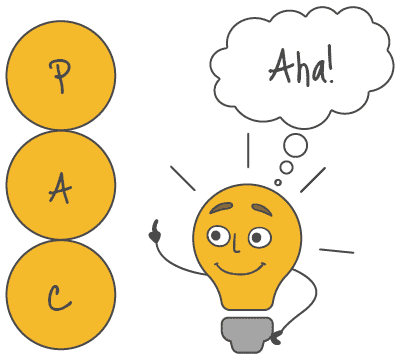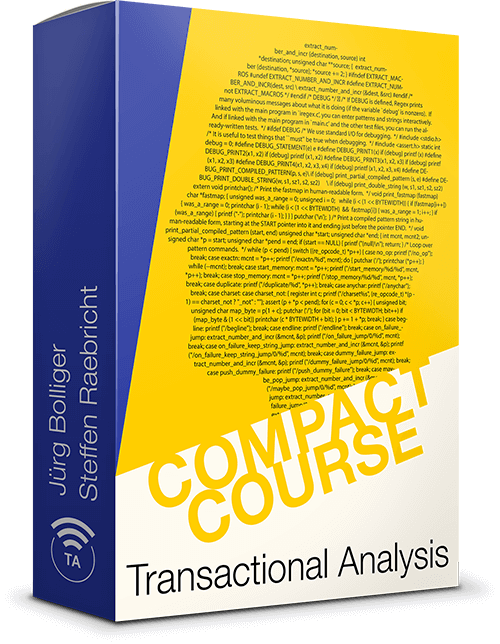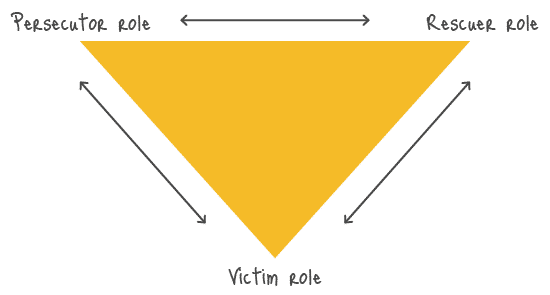Transactional Analysis Exercises to Try Out Yourself
Transactional Analysis (TA) is a theory for practice. It aims at application. Therefore, Transactional Analysis exercises are just right to practice this wonderful method. On this page I have prepared four exercises for you to put TA into practice. If you are not yet familiar with the respective concepts - no problem. Here you will find all the information you need to do the exercise.

1. Transactional Analysis Exercises - How TA Works when Applied in Real Life
When it comes to solving Transactional Analysis exercises, many people become insecure. What is the right solution? How does the exercise work? Therefore I would like to give you a short introduction to the effects of TA as well as its practice understanding.

Transactional Analysis works with two distinct steps:
- Analysis
- Decision-Making
TA provides powerful concepts and humanistic ethics for analysis. It offers an attitude towards the application of the concepts. Analysis is an essential step. When analysing specific situations and behaviours, you can expand your awareness for your thinking, acting and feeling. You can find out for example, in what way a person contributes to the problems for which they seek a solution with TA.
I'll give you an example: So far, Alexander always wanted to have the last word. With this behavior he created a justification for himself to feel that he was right. He analyzes his behavior with the drama triangle of Transactional Analysis and finds that his know-it-all attitude works for some time, but several people have already distanced themselves from him. In the long run he is a loser in such cases. When this dynamic becomes clear to him, he is astonished. He has a feeling of embarrassment in his stomach.
Through analysis with the help of Transactional Analytical concepts you can increase your awareness of your behaviour, thinking and feeling.
Analysis = Expansion of Consciousness
Let's move to making a new decision: Just because you have increased your consciousness does not mean that you change your behaviour automatically. For example, many people know why they are afraid of dogs. Maybe they were scared or even bitten by one. That doesn't mean that they can decide to behave more calmly towards dogs. It needs more. The TA provides the idea of a new decision for this. You can find more Transactional Analysis examples here.
TA looks at what is needed so that you can make a new decision. Maybe in case of dog anxiety you need a targeted training and new experiences with dogs to let go of the anxiety. The tools for this are the so-called interventions. One Transaction Analysis intervention is the question. We also use it in the exercises so that you can make a new decision.
Let's move to the exercises.
ENHANCE YOUR COMMUNICATION SKILLS
FREE Compact Course

- Communicate successfully in your professional life
- Enhance conflict management skills
- Understand others better
Learn Transactional Analysis with the Compact Course. Emails, Videos, PDF-Exercises.
No Spam. Unsubscribe at any time.
2. Solutions to Transactional Analysis Exercises - Right or Wrong?
When it comes to Transactional Analysis exercises, the question of right or wrong often arises. Or: What is the solution?
TA does not think in right or wrong. Rather, it makes a statement about how something is currently structured and how it can be developed further. It rather thinks in terms of expediency. Childlike behaviour in adults is not "wrong". It may be inappropriate for the current situation, because it does not achieve the desired results. With the exercises you get an idea where you stand in relation to your personal development and how you can proceed to grow personally.
With Transactional Analysis exercises you can arrive at a value-free statement about yourself. The exercises will form a snapshot of your current situation. Because you as a human being are not right or wrong. You only produce results. They can be beneficial to you or not. If they are not, it does not mean that they are wrong. A jumped out bicycle chain is also not wrong. It is what it is. A chain jumped out on a bicycle. Therefore, in Transactional Analysis, exercises with solutions are rather instruments for expanding consciousness, determining one's position or aids to decision-making.
3. Transactional Analysis Exercises - Let's Go!
As announced above, I have prepared three exercises for you. With them, you can put Transactional Analysis to practice.
a) Exercise Positioning
With the position determination you can see how advanced you have developed in different areas of life. The exercise can also help you to decide if you want to book a Transactional Analysis course that will help you develop the results you have achieved today.
b) Transactional Analysis Exercise - Ego States
The ego states form the core model of Transactional Analysis. There are three. The parent ego (P), the adult ego (A) and the child ego (C). Graphically they are represented in this way. The ego state model:
An ego state model consists of:
- Thinking,
- Feeling,
- Behaving.
Each of the ego states can have positive qualities that enrich your life - but also negative effects that reduce your quality of life.
For example, the parent ego state is where eveluations come from. We can use them in a beneficial way by giving constructive feedback to an employee. But we can also use them destructively. If we constantly know everything better and with this behaviour burden our relationships with our fellow human beings, we do not make any progress. Our parent-ego is formed out of adopted patterns of behaviour, feelings and thoughts of our former caregivers.

The ego state model of Transactional Analysis consisting of parent, adult and child ego state.
In the adult ego state you think, feel and behave appropriately and in the here and now, i.e. logically and rationally. You can make clear decisions and have access to your intellectual potential.
In the child ego state you think, feel and behave as you did as a child. There is the free child, the adapted child, but also the rebellious child.
With this exercise, you can get awareness about your ego states.
If you want to analyze your ego states more thouroughly, you can do this with the egogram.
c) The Drama Triangle - Exercise with Solution / Appraisal
The drama triangle is a popular concept in TA. It consists of the rescuer role, the victim role and the persecutor role:

The drama triangle in Transactional Analysis
The problematic thing about behavior within the drama triangle is that the outcome are at least bad feelings for everybody involved. This could, for example, be a partnership dispute. But it can also get worse - up to legal proceedings or autopsies.
A person starts in one of the drama triangle roles. At a later stage follows a point where the participants change roles in the drama triangle. For example, the victim could become a persecutor. If, for example, someone piles up his anger until the last straw that breaks the camel's back. In the ensuing reaction, the victim and persecutor exchange positions and a serious fight will ruin their relationship.
With this exercise you can analyze which positions you occupy in the drama triangle based on different situations. This could help you to identify your "favourite position". Each person has a preferred position in the drama triangle that they occupy. If you know your favourite role, you can develop an awareness of when you decide to go into drama triangle disputes to get your bad feelings.
I hope you enjoy the Transactional Analysis exercises. If you have questions, comments or success stories, I would be happy if you share them in the comments. I reply to each comment personally.

